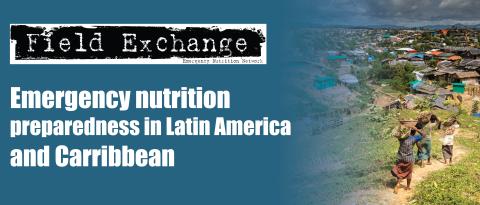The effect of acute malnutrition on enteric pathogens, moderate-to-severe diarrhoea, and associated mortality
Research snapshot1
Children with acute malnutrition are three times more likely to die from diarrhoea than children with better nutritional status, and over 200,000 diarrhoeal deaths are attributed to acute malnutrition annually. Using data from the Global Enteric Multicenter Study, authors assessed whether acute malnutrition modifies the association: a) between common enteric pathogens and moderate-to-severe diarrhoea, and b) in children with diarrhoea, between enteric pathogens and death. Children older than six months of age with moderate-to-severe diarrhoea and age-matched and community-matched controls were included in this analysis. Acute malnutrition was defined as mid-upper arm circumference (MUAC) below 12.5 cm. Odds ratios were adjusted for age, site and co-infection. Adjusted odds ratio (aOR) for moderate-to-severe diarrhoea associated with typical enteropathogenic E. coli among children aged 6-11 months was 2.08 (95% CI 1.14–3.79) in children with acute malnutrition and 0.97 (0.77–1.23) in children with better nutritional status, compared with healthy controls. Enterotoxigenic E. coli among children aged 12-23 months also had a stronger association with moderate-to-severe diarrhoea in children with acute malnutrition (aOR 7.60 [2.63–21.95]) than among similarly aged children with better nutritional status (aOR 2.39 [1.76–3.25]). Results for Shigella spp, norovirus and sapovirus suggested they had a stronger association with moderate-to-severe diarrhoea than other pathogens among children with better nutritional status, although Shigella spp remained associated with moderate-to-severe diarrhoea in both nutritional groups. Among the 144 children with moderate-to-severe diarrhoea who died, 92 (64%) had acute malnutrition. Pathogen-specific, 60-day fatality rates for all pathogens were higher among children with acute malnutrition, but no individual pathogen had a significantly larger increase in its relative association with mortality.
The authors conclude that acute malnutrition might strengthen associations between specific pathogens and moderate-to-severe diarrhoea. However, the strong link between acute malnutrition and mortality during moderate-to-severe diarrhoea in children is not limited to specific infections and affects a broad spectrum of enteric pathogens. Interventions addressing acute malnutrition could be an effective way to lower the mortality of both childhood malnutrition and diarrhoea.
Endnotes
1Kirkby D Tickell*, Rumana Sharmin*, Emily L Deichsel, Laura M Lamberti, Judd L Walson, A S G Faruque, Patricia B Pavlinac, Karen L Kotloff, Mohammod J Chisti. (2020) The effect of acute malnutrition on enteric pathogens, moderate-to-severe diarrhoea, and associated mortality in the Global Enteric Multicenter Study cohort: a post-hoc analysis. Lancet Glob Health 2020; 8: e215–24.


